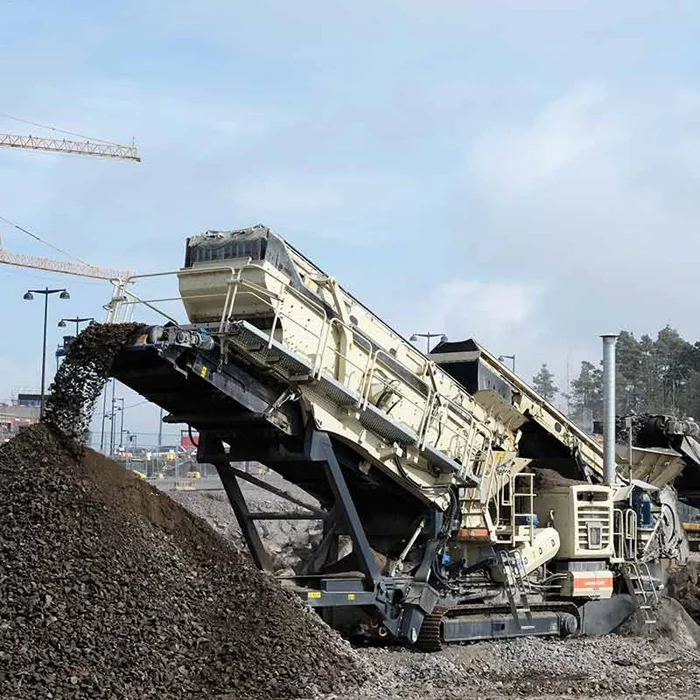Limestone crushing is an essential part of the mining and construction industry. Cone crusher parts are used for this purpose, and they come in various sizes and configurations to match different applications.
However, every operator should be aware of certain do’s and don’ts when using cone crushers before making any adjustments or repairs. This guide will provide a comprehensive overview of the dos and don’ts associated with limestone crushing so you can get the most out of your cone crusher parts.
What Is Cone Crushing?
Cone crushing is a process used in aggregate and mining operations to reduce large pieces of rock, ore, or minerals to smaller sizes. Cone crushing works by squeezing the material between an eccentrically gyrating spindle that is enclosed by a hard outer shell, known as the concave.
The material is crushed by being compressed between the mantle and bowl liner, which exerts forces on the particles that cause them to break apart. Cone crushers are generally used for secondary, tertiary, and quaternary crushing stages in hard-rock mines and quarrying operations.
When sizing a cone crusher, operators should consider several factors including:
- Output size requirements
- Desired product size
- Capacity needed
- Type(s) of material being processed
- Feed rate
- Eccentric speed (revolutions per minute)
- Closed-side setting (CSS)
- Discharge opening size and design
- Safety
By properly selecting components, it is possible to gain maximum performance from a cone crusher with excellent product quality control throughout its life cycle despite changing conditions within your mining site or quarry operation.
Limestone Crushing
Limestone crushing is an important procedure that demands careful attention. It is typically used in the construction industry for a variety of applications, such as the production of cement, lime, and aggregates. Cone crushers are commonly used for limestone crushing due to their ability to effectively crush hard materials while maintaining a consistent particle size.
The mining of limestone involves extracting the mineral from its host rock before it can be processed for use in other industries. Once extracted, limestone can be crushed using cone crushers or other types of crushing machines to reduce its size and prepare it for further processing.
Crushing limestone produces high-quality aggregate products which are often used in road building, landscaping, concrete production, and a variety of other applications. Cone crushers also offer excellent versatility by allowing operators to adjust particle size according to their preferences and budgets.
Do’s and Don’ts of Limestone Crushing
Do’s:
- Use the right cone crusher parts to ensure efficient crushing.
- Inspect the limestone regularly for wear and replace worn parts immediately.
- Install appropriate guards in place to protect workers from hazardous machinery.
Cone crushers are most effective when using the appropriate parts for their specific application. Cone crusher parts, such as the mantle and concave, play an essential role in both mineral and aggregate production processes by crushing the material to the desired size and shape. Cone crusher parts should be inspected regularly for wear and tear and replaced promptly to ensure efficient operations.
It is important to install guards around cone crusher parts when operating them as they can become dangerous if left unguarded or accessed by personnel while running. This will help protect workers from any potential hazards related to the machinery.
Don’ts:
- Overload a cone crusher with material, as this will cause damage to components like bearings and bushings.
- Ignore warning signs of wearing cone crusher parts as this can lead to serious damage or failure down the line.
- Leave Cone Crusher Parts unguarded when operating, as these may be dangerous for personnel working around them.
Overloading a cone crusher with materials should be avoided as it can cause damage to vital components such as bearings and bushings. Cone crushers are designed to handle specific amounts of materials. Exceeding this amount may cause undue strain on its parts, leading to breakdowns or even catastrophic failure in some cases.
Warning signs of worn cone crusher parts should never be ignored because this could lead to more extensive damage over time. Cone crusher parts that are worn down too much may affect performance, increase energy consumption, reduce throughput, or even cause a complete shutdown of operations.
Cone crusher parts should never be left unguarded during operation due to the potential risks associated with accessing them while running. Personnel exposed may suffer cuts and abrasions from coming in contact with sharp edges or moving parts of the machinery.
Executing Professional Limestone Crushing with Mellott
By following these simple do’s and don’ts of limestone crushing, you can ensure that your cone crusher parts last longer, operate more efficiently, and save you money in the long run. Cone crushers are a crucial component for any aggregate processing operation due to their ability to efficiently reduce materials into usable sizes.
By taking proper care of them through regular maintenance and using best practices when handling material, you can maximize the lifespan of your cone crusher parts while also minimizing wear and tear on other components in your system. Investing time now will pay off down the road. To learn more, reach out to our experienced team of experts today at 855-554-1606.

